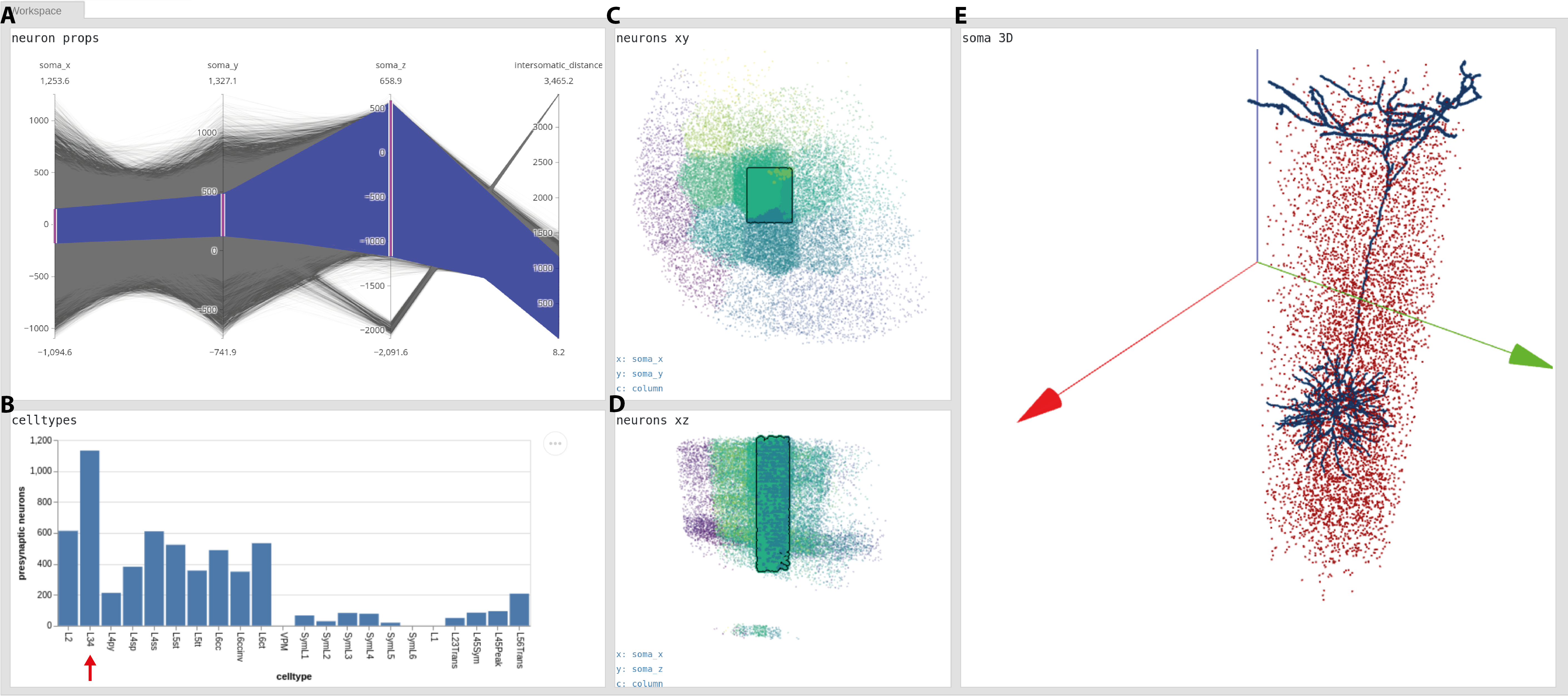
Rapid Prototyping for Coordinated Views of Multi-scale Spatial and Abstract Data: A Grammar-based Approach
Eurographics Workshop on Visual Computing for Biology and Medicine (VCBM), 2023.
Visualization grammars are gaining popularity as they allow visualization specialists and experienced users to quickly create static and interactive views. Existing grammars, however, mostly focus on abstract views, ignoring three-dimensional (3D) views, which are very important in fields such as natural sciences. We propose a generalized interaction grammar for the problem of coordinating heterogeneous view types, such as standard charts (e.g., based on Vega-Lite) and 3D anatomical views. An important aspect of our web-based framework is that user interactions with data items at various levels of detail can be systematically integrated and used to control the overall layout of the application workspace. With the help of a concise JSON-based specification of the intended workflow, we can handle complex interactive visual analysis scenarios. This enables rapid prototyping and iterative refinement of the visual analysis tool in collaboration with domain experts. We illustrate the usefulness of our framework in two real-world case studies from the field of neuroscience. Since the logic of the presented grammar-based approach for handling interactions between heterogeneous web-based views is free of any application specifics, it can also serve as a template for applications beyond biological research.
Acknowledgements
This work was supported by Deutsche Forschungsgemeinschaft grant SPP 2041 Computational Connectomics (D. B. and M. O.), the Max Planck Institute for Neurobiology of Behavior – caesar (M. O.), European Research Council grant 101069192 (M. O.), Neuroscience Network North Rhine-Westphalia grant iBehave (M. O.), and by the NSF grants NCS-FO-2124179, and IIS-1901030 (H.P.).